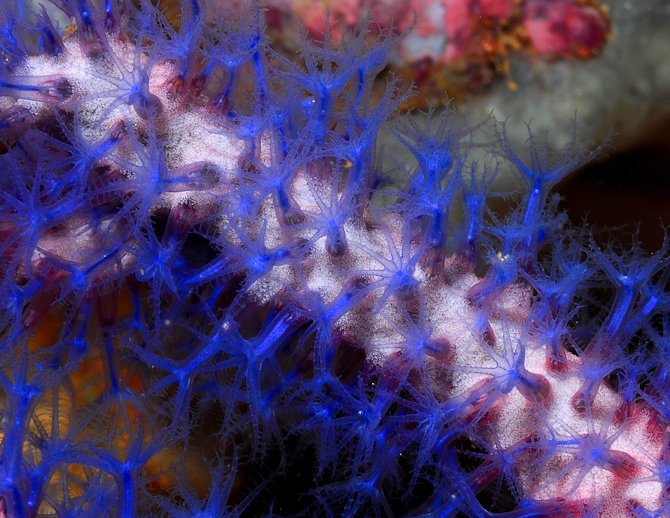Tim Wijgerde of Coralscience.org is building a mesophotic reef system, basically a low light reef. Tim dropped in to share with us why he decided to do a low light reef tank and what low light reef animals can teach us about traditional high light reefing.

Coralscience.org is currently constructing a system which will mimic the mesophotic reef zone. Mesophotic coral reefs are light-dependent (sub)tropical coral communities that occur in the deepest half of the photic zone, and therefore receive little sunlight. Starting at 30-40 m (100 – 132 ft) and extending to over 150 m (500 ft), these reefs have received little interest due to their secluded existence. They are inhabited by fascinating marine species, of which most cannot be kept alive in marine aquaria. New technologies however have paved the way for establishing systems which may harbor an unsurpassed diversity of marine life.
Mesophotic reefs are inhabited by highly interesting benthic species such as sponges, feather stars, bryozoans, tunicates, aposymbiotic (soft) corals and black corals. Stony corals also occur in the mesophotic zone, and they are the main contributors to mesophotic reef formation. Fascinatingly, these corals have adapted to this low-light environment.

Why study mesophotic reefs?
Mesophotic coral reefs are not only interesting due to their own specific assemblage of marine species, but also because they seem to serve as refugia for species occurring on the shallow reefs. Understanding and protecting these ecosystems therefore indirectly benefits shallow reefs. Mesophotic reefs are distinct from “true” deep water azooxanthellate coral ecosystems that occur at greater depths and are not light-dependent. Corals which grow in the mesophotic zone are still able to harness the sun’s energy, even though light levels may be as low as one percent of the light intensity experienced at the surface! Montipora and Leptoseris spp. have been found at depths over 150 m (500 ft), which rely on heterotrophic plankton feeding to a greater extent than their shallow counterparts.
Ex situ studies of mesophotic reefs are also a possibility. That is, the study of such ecosystems in an experimental aquarium. Members of coralscience.org are doing just that. By establishing a system which meets the demands of marine species inhabiting the lower light zone, fascinating new discoveries about their biology can be made.
By utilizing recent innovations such as artificial plankton analogues (Golden Pearls), bacterial filters which immobilize excess nutrients (NP-reducing BioPellets) and advanced computer-controlled sand beds (DyMiCo or Dynamic Mineral Control, see www.ecodeco.nl), the setup of a mesophotic reef system is now possible.

A key aspect of such a system is maintaining high plankton concentrations. Filter and suspension feeding animals which have not formed a symbiotic relationship with zooxanthellae heavily rely on plankton feeding, which is why they do not last long in the current over-filtered marine aquaria. The ocean is often regarded as being oligotrophic (nutrient poor), but in a way it is not. A lot of nutrients are actually stored in living particles such as bacteria, phytoplankton and zooplankton. For a captive reef to thrive, with all its biodiversity, it all comes down to providing high quantities of fine particles that serve as a nutrient source whilst maintaining high water quality. This simply cannot be done by using a standard Berlin system with live rock and a protein skimmer.
In the end, the development of systems that mimic the ocean as closely as possible, in this respect aquaria that promote plankton buildup and high water quality at the same time, is vital to the successful aquaculture of a myriad of marine species. Countless of species may be (sexually) reproduced in such systems, especially if mechanical filtration is absent (an example is the DyMiCo-technology). This could greatly increase the number of marine species which are cultured ex situ in a sustainable way. More natural reef displays will also captivate the public, and will promote education and conservation. A mesophotic ecodisplay, filled with invertebrates such as sponges, black corals, crinoids and tunicates, could be such an example. Read more about the setup of a mesophotic reef on www.coralscience.org, a non-profit project aimed at communicating marine and aquarium science to the general public.



